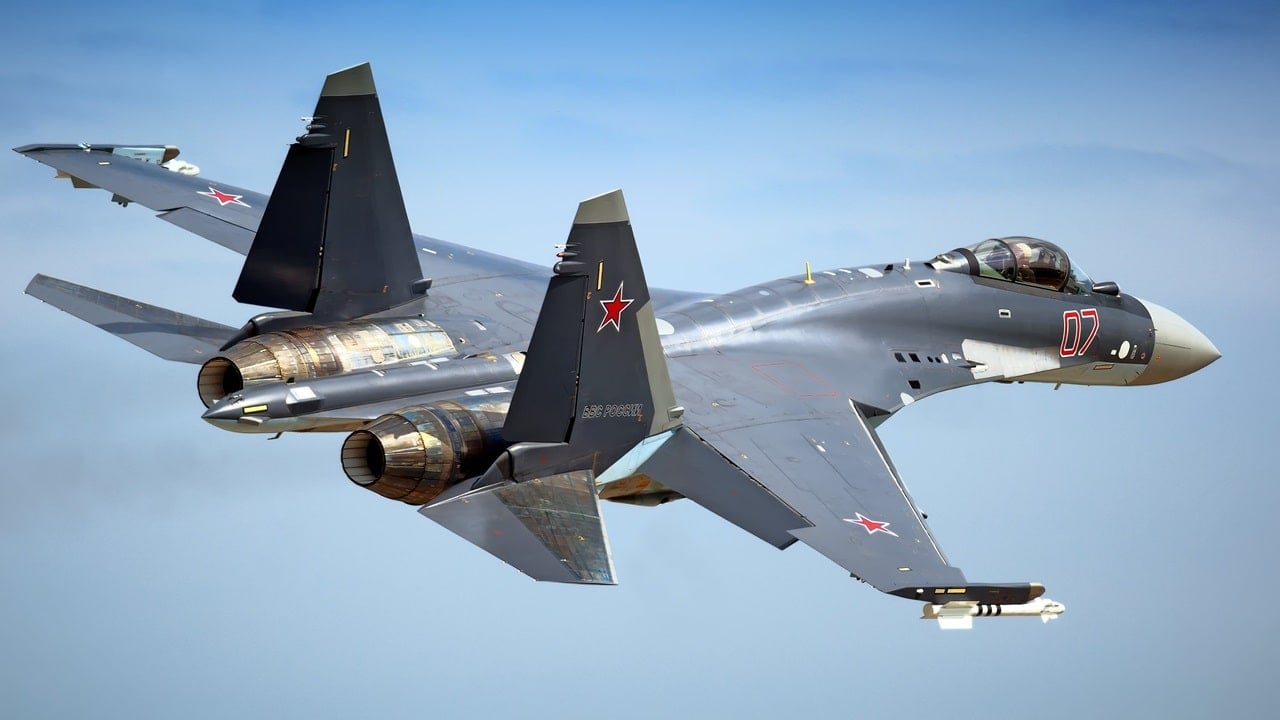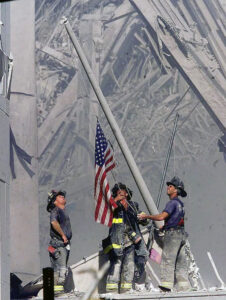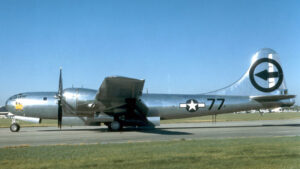Memorandum
Subject: Russian Threats and Warnings
To: All Readers and Interested Parties
From: Greg Smith, Author
Date: 4 October 2025
BACKGROUND:
From the 1950’s through the end of the Cold War in 1989, both the US and USSR regularly crossed airspace boundaries. Sometimes there were inadvertent crossings, while at other times the action was deliberate. Both adversaries used these incursions to test air defenses, evaluate electronic countermeasures, or conduct reconnaissance missions. On May 1, 1960, a U-2 piloted by Gary Powers was brought down over the USSR in a public relations debacle for the US.
Starting in 1958, as nuclear tensions escalated and the space race heated up, both sides elevated their tactics. The US Strategic Air Command implemented Operation Chrome Dome, a program to maintain a portion of the B-52 bomber fleet on continuous airborne alert. A second program, called the “Looking Glass” kept an EC-135 aircraft with the ability to ensure nuclear command and control capability airborne continuously. Operation Chrome Dome ended in 1968, while the Looking Glass lasted throughout the Cold War period.
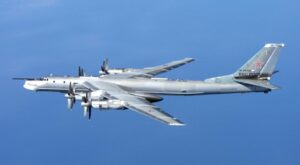 The Soviets responded by increased air patrols into the Alaska Air Defense Identification Zone (ADIZ) and Arctic approaches across Canada and Greenland. The US, in cooperation with Canadian forces, maintained a series of radar stations along the northern reaches of the continent, along with interceptors and anti-aircraft missiles on alert. The Distant Early Warning (DEW) line radars remained active throughout the Cold War, while fighters regularly intercepted Soviet TU-95 Bear bombers and other strategic bomber types at the edges of US and Canadian airspace limits.
The Soviets responded by increased air patrols into the Alaska Air Defense Identification Zone (ADIZ) and Arctic approaches across Canada and Greenland. The US, in cooperation with Canadian forces, maintained a series of radar stations along the northern reaches of the continent, along with interceptors and anti-aircraft missiles on alert. The Distant Early Warning (DEW) line radars remained active throughout the Cold War, while fighters regularly intercepted Soviet TU-95 Bear bombers and other strategic bomber types at the edges of US and Canadian airspace limits.
INTELLIGENCE ASSESSMENTS:
Although the Cold War officially ended with the dissolution of the Soviet Union in 1989, tensions have fluctuated over the years. With the Russian invasion of Ukraine in 2022, and the US support of Ukraine independence, incursions by Russian forces have increased. The number and type of incursions have also escalated across NATO countries who also provide direct support to Ukraine.
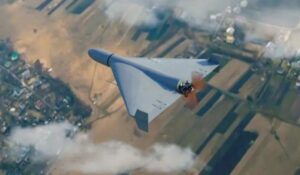 During the month of September 2025, several airspace violations have been noted in at least six European countries. Poland, Estonia, Latvia, Denmark, Romania, Bulgaria, and Norway have all reported incursions by suspected Russian drones or aircraft. When more than twenty Russian drones deliberately invaded their airspace, Poland responded by shooting them down. Other countries elected not to fire on the drones due to the risk of collateral damage from downed drones or munitions over populated areas. Denmark tracked the drone activity closely, noting that the drones appeared to be primarily interested in activities at bases where advanced F-35 and F-16 fighters are based.
During the month of September 2025, several airspace violations have been noted in at least six European countries. Poland, Estonia, Latvia, Denmark, Romania, Bulgaria, and Norway have all reported incursions by suspected Russian drones or aircraft. When more than twenty Russian drones deliberately invaded their airspace, Poland responded by shooting them down. Other countries elected not to fire on the drones due to the risk of collateral damage from downed drones or munitions over populated areas. Denmark tracked the drone activity closely, noting that the drones appeared to be primarily interested in activities at bases where advanced F-35 and F-16 fighters are based.
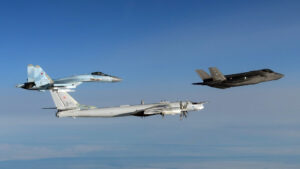
North American Aerospace Defense Command (NORAD) F-35 Lightning II fighter aircraft positively identified and intercepted two Russian Tu-95 and two Su-35 military aircraft over the Chukchi Sea,19 Feb. 2025. NORAD employs a layered defense network of satellites, ground-based and airborne radars and fighter aircraft to detect and track aircraft and inform appropriate actions. NORAD remains ready to employ a number of response options in defense of North America including meeting presence with presence.
In addition to the drone activity, Russian aircraft have been intercepted in the Alaska ADIZ, as well as Estonia, the North Sea, and Bulgaria. Some of the incursions have been conducted by TU-95 Bear strategic bombers, especially in Alaska. European instances included SU-30 and SU-35 fighter bombers, and Mig-31 fighters.
The rate of incursions appears to have escalated over the last several months, probably in response to negotiations between the US and NATO regarding the level of defense spending and support to Ukraine. In June, President Trump secured the cooperation of NATO countries to increase their defense spending relative to their GDP from roughly 2% to 5% per annum. Additionally, NATO countries agreed to purchase US weapons, which they could then provide to support Ukraine defense efforts. The US and NATO signaled a willingness to provide security guarantees to Ukraine, as did the US. Russian incursions are likely both a warning to NATO and the US to not provoke a wider conflict with Russia and a way to demonstrate that no nation is beyond the reach of Russian forces.
Russia is becoming increasingly isolated on the world stage. Mounting losses in Ukraine and a prolonged asymmetric war using drones, missiles and other newly developed tactics have demonstrated systemic weaknesses within the Russian military. The war in Ukraine does not appear to be one that will end soon, or favorably for either side. Russian President Putin, a one-time KGB spy in the Soviet system, has long desired a return to the old system and a resurgence of the Eastern Bloc. Neither is fully likely, but he has designs to return Ukraine and other former Soviet states, primarily in the Baltic region, back to the fold. Clearly, he has little concern over the losses in troops or equipment required to exert his influence over the region.
Russia probably does not want to engage NATO or the US directly. However, Putin does want both the US and NATO to know that Russian forces can strike back if NATO forces become directly engaged in Ukraine. Russian Foreign Minister Sergei Lavrov stated in an address to the UN General Assembly in September that Russia is prepared for a “decisive response” to any Western aggression in Ukraine. He also accused Germany and other NATO countries of “militaristic threats” and creating a “likely scenario” for World War III. Meanwhile, President Trump continues to pressure countries not to purchase oil or other goods from Russia to limit their ability to fund the ongoing war with Western money. Russia will likely continue to press the war in Ukraine, whether NATO becomes involved accidentally through provocation and escalation will determine the likely end state for the conflict, stalemate or an expanded (possibly nuclear) war.
CURRENT OPERATIONS UPDATE:
Killer’s Reign is still with the story editor. We have had a few discussions concerning potential changes to the story structure and characters, and I look forward to a full review with the editor in the coming days. Several of the changes will make the story stronger, more entertaining and a much better read. Once I complete the changes and another round of edits, I hope to complete the manuscript and have it ready for publication in 2025. Meanwhile, I continue to work the rewrite of Sleeper Cell and develop the plot and story line for a World War II historical fiction thriller and associated screenplay.
COMMUNICATIONS UPDATE:
All my stories are passion projects and stories I enjoy reading as well as writing. I also write some nonfiction, including the recently released The Coach’s Playbook, which was a collaboration project that became a best-seller on Amazon in July. I have also joined a new collaboration project which is scheduled for publication in February 2026.
My fiction stories, Killer’s Reign and Sleeper Cell draw heavily on current events. Although works of fiction, I strive to ensure that the events and characters are plausible and representative of real word events and scenarios.
Check my website regularly for more information about my books and stories, updates on current events, and interesting tidbits of intelligence.
Stay safe, stay alert, stay informed.
Greg Smith
Author
cc:
S2 Intelligence
S3/5 Operations & Plans
S6 Communications

